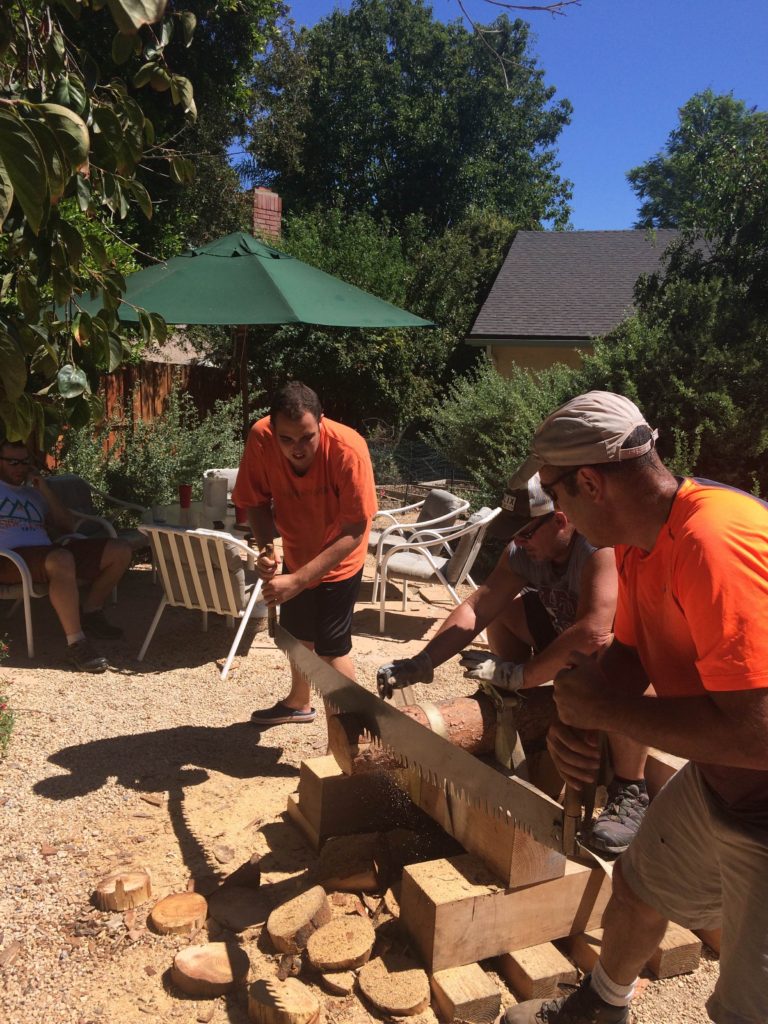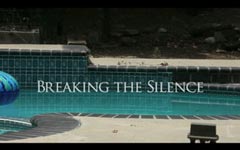by guest blogger, Michael Ramirez
www.special-fit.com
Recently I received a call from a parent asking if I could fitness train an autistic child. I had been a high school baseball coach for over 10 years. Much of my expertise in fitness had come from various experiences in working with athletes in strength and conditioning programs, working in fitness centers, through textbook study, and apprenticing other fitness experts. I also had 10 years of experience working as a behaviorist with autistic children. I had a sound understanding of both areas, but this was an opportunity to combine the two. I quickly discovered that despite the fact that people with autism face many physical challenges, there wasn’t much information out there or programs that addressed this area. In order to work with this child, I would have to start from scratch and develop a program tailored specifically for him.
When I began my research, I started to think about what was available to the autism community. School programs, like Adaptive PE, really didn’t address the issues I was going to try to work on. One problem I saw with APE, during my years as a behaviorist, is that it focused too much on teaching how to play certain games or sports, which I found to be too abstract, with not enough focus on getting the kids to move and use their bodies. Instead of focusing on functional movements, these programs produced more frustration because of the slow paced activities. I then questioned why people with autism don’t go to their local gym or just hire a trainer. This was obvious. First, even if a parent hired a personal trainer to work out their child, there was no guarantee that the trainer would have any understanding of autism and the challenges that accompany people living with this condition. Secondly, therapists like myself, don’t always have the fitness background to be able to work on the fitness side in a safe and knowledgeable way. Needless to say there weren’t many resources out there, so I was going to have to develop a program through the combination of my two experiences in both the fitness world and as a behaviorist.
I began to think about all of the different children I had worked with in the past and the physical challenges they faced each day. Many of the kids I had seen shared many similar physical characteristics like low muscle tone, poor coordination, lack of strength, lack of flexibility, balance issues, and overall limitations in their movements. Then there was the neurological aspect that impacted their physical functioning. Challenges with motor planning and sensory integration (proprioception and vestibular) were the most evident.Communication and behavioral challenges are also common among children with autism. Taking this into consideration, it became clear why there weren’t many programs out there for people with autism. There were so many issues that made it difficult to produce such a program. Safety was the first thing came to my mind. Initially I was uncertain how I was even going to get a child with autism to perform the basic functions of fitness. Although I had a great deal of experience in working with kids with autism on the behavioral side as well as many experiences working with neuro-typical people on the fitness end, I had never combined the two. Many autistic people are very out-of-shape and have significant gaps in their strength and mobility. With this in mind, I began
imagining the process of getting one of my clients to do a burpee, or a deadlift or to run for an extended period of time, or to be willing to exert themselves in a way that would get them the types of results that would be necessary for a physical transformation. This is hard for anyone beginning a fitness program, but is particularly challenging for an autistic child who may not be used to engaging in any kind of exercise. I knew that if I was going to get anyone in shape, they would have to be exposed to “real fitness.” I had worked alongside occupational therapists for many years. I had seen how they struggled to get children to do some of the things they demanded. What I was going to require was not like putting a child on a swing. I was going to demand real workouts with the goal of fitness and progression.
A couple years back, I had been exposed to the concept of CrossFit through a family member. I had trained in CrossFit for a couple years when I began to train my first client with autism. When I started to think about all the experiences and knowledge I had from the therapeutic and fitness side, CrossFit was a good match as a means to structure a program specifically tailored for children with autism. CrossFit scales exercises to the individual. This seemed to connect to the “I” in Stanley Greenspan’s DIR Floortime Model which stands for “individual differences.” Since no two people are alike, no two people with autism are alike either. Children that I would be working with needed a specific program to fit their needs. CrossFit allowed people to progress based on their current fitness level. CrossFit was developed by Coach Greg Glassman. CrossFit ,com states that Glassman defined “ fitness in a meaningful, measurable way (increased work capacity across broad time and modal domains). CrossFit itself is defined as that which optimizes fitness (constantly varied functional movements performed at relatively high intensity).”
Many children with autism struggle with flexibility and range of motion. Proprioceptive Neuromuscular Facilitation (PNF) was a good answer to this. Of course I needed to modify its application. PNF was a good way for me to facilitate stretching without having the student do the work. The combination of this type of stretching routine and the CrossFit structure, gave me the necessary components needed to design a good program to fit the needs of people with autism. All I needed to do was test it.
I began to work with the family who was in search for a personal trainer. It was my first opportunity to test my concepts and ideas. There were many bumps in the road, but the road to success is not always straight, as they say. It took a while to figure out how to elicit certain movements, capture attention, and promote motivation. I relied heavily on my experiences working with Dr. Arnold Miller, who created The Miller Method; a cognitive systems approach to working with kids on the spectrum. The basic philosophy that I took from his teachings, in the application to this program, was the use of children’s aberrant systems and transforming them into functional, relevant activities. For example,
one of my athletes likes to take string like objects and twirl them around. It is a self-stimulatory behavior. I used his motivation to stim on these objects, to introduce a heavy rope and create a system of functional movements that can be repeated. It turns “rituals into repertoire”, also a title of one of Dr. Miller’s books. His philosophy in working with people with autism shifted my view about how to use certain behaviors that are common to people with autism. I was fortunate enough to have worked closely with Dr. Miller for several years before his passing. His techniques worked well in combination with CrossFit methodologies. They simply complimented each other.
The philosophy of this workout program is based on three principles: Neurological/Physical/Individual Based (NPI). Neurological Skills, as it refers to fitness, describes functions like agility, accuracy of movements, coordination, and balance, as well as body awareness. Physical Skills include characteristics like strength, flexibility, endurance, stamina, power, etc. The last part takes into consideration the differences between each individual. Everyone has their own set of skills and abilities. With children and teens with autism, I needed to consider many different things, primarily communication (receptive
and expressive), cognitive ability, socio-emotional skills, sensory processing, behavioral challenges, and learning styles. Scaling and modifying exercises, using the CrossFit methods allowed us to tailor a program specifically for each individual, while helping them progress through each movement at their own pace.
The physical components of exercise in relation to people with autism needed to address the student’s areas of weakness as well as their strengths. My research emphasized the five basic fundamental movements of fitness: pushing, pulling, bending, rotation, and locomotion. These foundational movements allow us to work on basic movements, and build up to more complex and compound movements, through the use of scaling and prompting. Many autistic kids have difficulties with these movements. For example, one of my clients has a big frame and was fearful of certain movements. In our assessment, he was fearful of bending his elbows to lower his upper body because he thought he would
not be able to support his own weight and might flop down and smash his face into the ground. As a result, he was unable to do a push-up, so for weeks and months we worked incrementally toward this goal, first by getting him vertical and pushing off a wall, and then by progressively lowering him horizontally towards the ground. Today he can push off the ground, and with a little assistance, he can get his hips up. I know it will be no time before he is doing a full push-up on his own. He has also made big strides in his ability to bend and squat. Initially he would bend his knees only very minimally. This impacted on his ability to perform daily functions like picking up an object from the floor
or even sitting down at a desk. A few weeks ago he got his rear end below his knees for the first time, when doing an air squat, with some support to maintain balance (holding his hands out in front of his chest). This was a great accomplishment for him.
When I began to work with some of my first clients I noticed many common
characteristics. Many of the children had bodies that had low muscle tone, very weak posterior chain and core muscles, tightness in the lower half, and very soft upper bodies (Physical). Some of the kids I met had difficulties with balance, coordination, motor planning, agility, the ability to perform compound movements, and be accurate in movements (Neuro). There were also deficits in communication, attention, and behavioral issues, which made it difficult to motivate them to perform for an extended period of time. Let’s face it; exercise can sometimes be painful and hard, especially in the beginning. To get the best results in each workout I focused on strength, compound movements, strengthening a specific muscle groups, and work on the constant varying functional movements at a high intensity.
It takes time to get the kids accustomed to the workload, the pacing, and to gain confidence in the movements. There are times when I need to be more of a motivational coach, than a fitness coach. It is definitely a process. All of my students are making gains in one way or another. Working on physical fitness has its obvious advantages when you consider the health benefits but when it comes to people with autism, the benefits are even greater. I have received feedback that fitness training has impacted things like: sleep patterns, energy levels, mood, attention, communication and behavior. One of my students expressed that exercising helps him to feel his body better. He also feels
it has been helpful with his pointing (typing). Exercise gives kids with autism added satisfaction and increased self-esteem when they connect their brain and their body and even strategies to deal with excess energy. Recently, the mother of a client told me that her son requested to do some pull-ups in the middle of a behavioral therapy session. He then proceeded to continue to perform his own routine of sit-ups and push-ups in combination until he relaxed.
Fitness is an area that has far too long been under utilized in the lives of people with autism. My mission is to change that, through my company, Special-Fit. I want to thank all of my students for inspiring me and helping me develop this program. It was because of the relationship I’ve created with them and their families, that forever changed the way I view people with autism. They have taught me more about breaking through limitations than any other individuals I have met in my lifetime.
Michael Ramirez
Special-Fit
Owner and Head Trainer
For more information about Special-Fit, visit our website at www.special-fit.com





